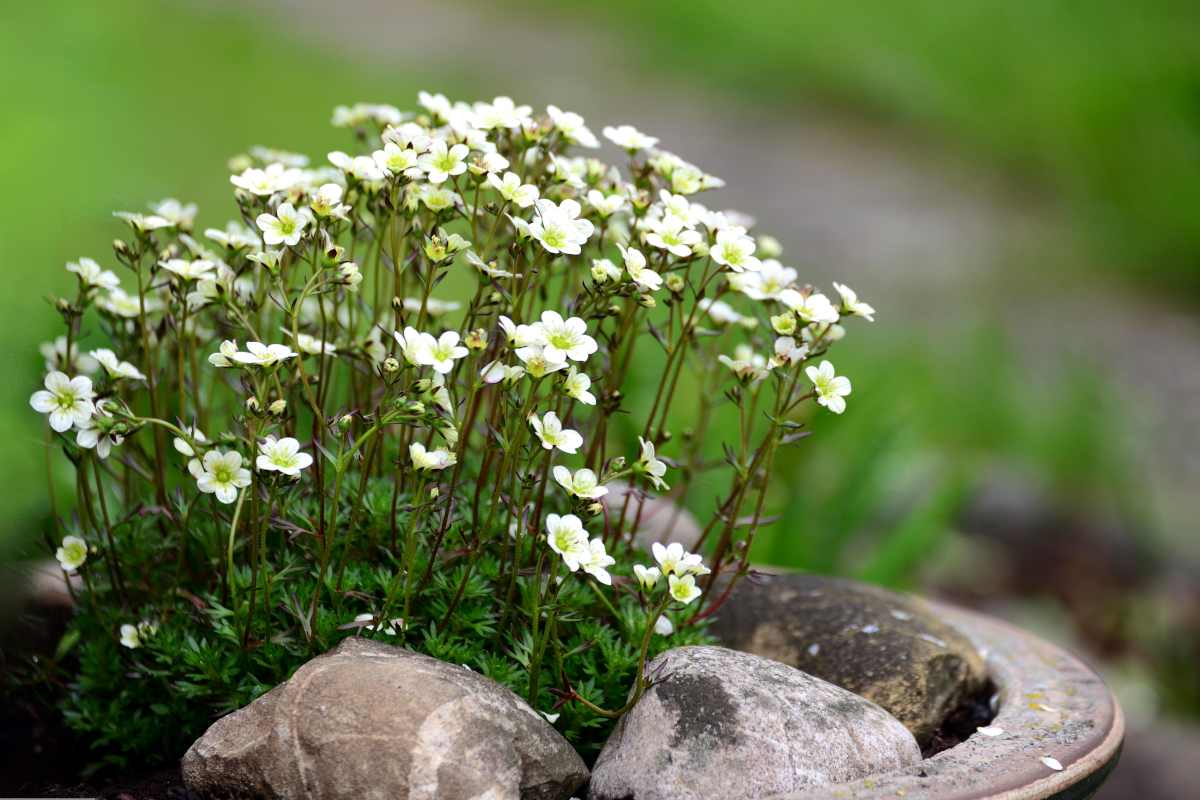
Saxifrage is a fascinating and diverse group of plants that has captivated botanists and plant enthusiasts alike. With a name derived from the Latin words “saxum” meaning rock, and “frangere” meaning to break, saxifrage refers to the plant’s ability to grow in rocky crevices and break through seemingly impenetrable surfaces. These plants are known for their delicate blooms, ranging in color from vibrant pinks and purples to soft whites and yellows.
But saxifrage is not just your ordinary garden plant. It holds a plethora of mind-blowing facts that will leave you in awe of its adaptability, unique characteristics, and ecological significance. In this article, we will delve into ten fascinating facts about saxifrage that will shed light on its versatility and beauty.
Key Takeaways:
- Saxifrage is a resilient plant that comes in vibrant colors, attracts butterflies and bees, and symbolizes perseverance, making it a great addition to any garden for its beauty and ecological benefits.
- With over 400 species worldwide, saxifrage is not only visually stunning but also has medicinal and culinary uses, showcasing its adaptability and diverse growth habits for dynamic garden designs.
Saxifrage Comes in Various Colors
Saxifrage is a versatile and visually stunning plant species, known for its beautiful flowers that come in a wide range of colors, including vibrant shades of pink, yellow, white, and purple. Its colorful blossoms make it a popular choice among gardeners and floral enthusiasts.
Saxifrage Can Thrive in Extreme Conditions
One fascinating aspect of saxifrage is its ability to grow and flourish in extreme environments. It can be found in high-altitude regions, rocky slopes, and even in the Arctic tundra. This remarkable resilience is due to its adaptive nature, allowing it to survive in harsh climates with limited resources.
Saxifrage Has Medicinal Properties
Did you know that saxifrage has been used for centuries in traditional medicine? It is believed to have various medicinal properties, including anti-inflammatory and diuretic effects. Some cultures even use it to treat urinary tract infections and gastrointestinal disorders.
Saxifrage Symbolizes Perseverance
In many cultural traditions, saxifrage symbolizes perseverance and tenacity. Its ability to thrive in challenging conditions serves as a reminder to never give up and keep pushing forward, no matter the obstacles that come our way.
Saxifrage Attracts Butterflies and Bees
The stunning blooms of saxifrage act as a magnet for pollinators. Bees and butterflies are particularly attracted to its nectar-rich flowers, making saxifrage an excellent plant choice for those looking to attract these beneficial insects to their gardens.
Saxifrage Comes in Different Shapes and Sizes
Not only does saxifrage come in various colors, but it also exhibits a wide range of shapes and sizes. Some species feature delicate, star-shaped flowers, while others have larger, more robust blooms. This diversity adds to the allure and appeal of this captivating plant.
Saxifrage is an Alpine Plant
Saxifrage is often associated with alpine regions, as many species thrive in mountainous areas. The name “saxifrage” actually derives from Latin, meaning “stone-breaker,” as it was believed to have the power to break rocks and grow in seemingly inhospitable environments.
Saxifrage Can Be Found Worldwide
Saxifrage is a widespread plant genus, with over 400 known species found across the globe. It can be found in various regions, from North America to Europe, Asia, and even parts of Africa. Its adaptability has allowed it to establish a presence in diverse habitats.
Saxifrage Has Ornamental and Culinary Uses
Saxifrage’s striking blooms and foliage make it a popular choice for ornamental purposes. It adds beauty and charm to garden beds, rock gardens, and container plantings. Additionally, some species of saxifrage have edible leaves and are used in salads and herbal teas.
Saxifrage Varieties Can Differ in Growth Habits
While saxifrage is generally considered a low-growing plant, different species and varieties can exhibit varying growth habits. Some forms grow close to the ground, forming compact rosettes, while others send up tall flower stalks. This diversity allows for interesting and dynamic garden designs.
Conclusion
In conclusion, saxifrage is an extraordinary plant with numerous fascinating qualities. From its ability to thrive in harsh environments to its medicinal properties, saxifrage continues to captivate botanists and plant enthusiasts alike. Its unique adaptations, such as the cushion-like growth habit and the ability to absorb heavy metals, make it a valuable plant for ecological restoration purposes. Furthermore, the diverse range of species within the saxifrage family showcases the incredible adaptability and resilience of plants in the face of adversity.Whether you are an avid garden enthusiast or simply appreciate the wonders of nature, exploring the world of saxifrage is sure to leave you amazed. So, next time you stumble upon a saxifrage plant, take a moment to appreciate its beauty and the extraordinary stories it has to tell.
FAQs
1. What is saxifrage?
Saxifrage is a genus of flowering plants that belong to the Saxifragaceae family. It comprises over 440 species, characterized by their ability to grow in diverse environments.
2. Where can saxifrage plants be found?
Saxifrage plants can be found in various regions around the world, including mountains, rocky terrains, and arctic regions. Different species have adapted to specific habitats, enabling them to flourish in extreme conditions.
3. What are some common uses of saxifrage?
Saxifrage has been traditionally used in herbal medicine for its anti-inflammatory and diuretic properties. It is also a popular choice for rock gardens and as ornamental plants due to their attractive flowers and unique growth habits.
4. How do saxifrage plants survive in harsh environments?
Saxifrage plants have evolved various adaptations to survive in harsh environments. These include deep root systems for accessing water, compact growth habits that protect against wind and cold, and the ability to absorb heavy metals and pollutants from the soil.
5. Can I grow saxifrage plants in my own garden?
Yes, many saxifrage species can be successfully cultivated in gardens. They are particularly well-suited for rock gardens or areas with well-drained soil and ample sunlight. However, it is important to choose the appropriate species based on your climate and local conditions.
Saxifrage's stunning adaptability and beauty make this plant truly remarkable. Delving deeper into the world of saxifrage reveals even more captivating facts. For those intrigued by the purple varieties, our article on purple saxifrage provides 18 fascinating insights. Bergenia, another member of the Saxifragaceae family, also boasts its own set of 17 mind-blowing characteristics. Continue your exploration of these extraordinary plants and uncover the secrets that make them so unique and cherished by gardeners and nature enthusiasts alike.
Was this page helpful?
Our commitment to delivering trustworthy and engaging content is at the heart of what we do. Each fact on our site is contributed by real users like you, bringing a wealth of diverse insights and information. To ensure the highest standards of accuracy and reliability, our dedicated editors meticulously review each submission. This process guarantees that the facts we share are not only fascinating but also credible. Trust in our commitment to quality and authenticity as you explore and learn with us.


